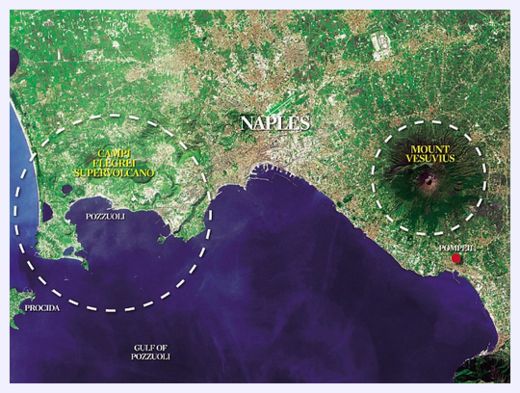
It begins with a swarm of 1,000 small earthquakes that ripple under the pavements of Naples. Air-conditioning units fall from the sides of buildings and tiles slip from the walls. Inside the National Institute of Geophysics and Volcanology's control centre, a bank of screens indicates that the quakes aren't being generated by the giant Mount Vesuvius, which looms over the city.
These quakes are coming from something far bigger, from one of the largest and most dangerous volcanoes in the world: the Campi Flegrei caldera. Vesuvius, which destroyed the Roman city of Pompeii, incinerating and suffocating thousands, is nothing more than a pimple on the back of the sleeping dragon of Campi Flegrei, an active four-mile-wide sunken volcano. A call is quickly put through to Civil Defence and the Italian Ministry of the Interior: the city must be evacuated immediately.
A short distance away, the ground around the ancient town of Pozzuoli is stretching, swelling, doming. Fumaroles - vents emitting columns of steam rich in CO2 - open up in the broken Tarmac. Four-and-a-half miles below the surface a bolt of magma has escaped the main reservoir and is rising upwards, changing and solidifying. As it reaches groundwater, it's converted into a sponge-like stone. As the water boils away it feeds critical amounts of gas into the sponge, and the pressure builds until finally it explodes like a malfunctioning boiler.
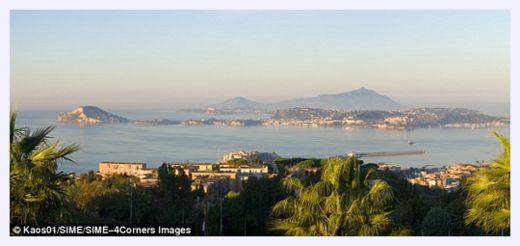
Back on the streets of Naples, it's too late to run. Bumper-to-bumper traffic comes to a halt as drivers grind on their horns. They watch helplessly as a boiling black cloud of hot gas and rock rolls over the horizon at hurricane speed, suffocating everything in its path. In this area inhabited by millions, built in one of the most dangerous volcanic regions on earth, all life is over.
The Campi Flegrei caldera is a supervolcano. Although there's no picture-postcard volcanic cone, hidden beneath the seemingly placid landscape lies a volcano of immense power. While a new eruption here would be more likely to result in the creation of another Vesuvius-like cone, the worst-case scenario could see it obliterating much of life in Europe.
In this eventuality the Earth's surface would swell and crack and a series of small eruptions would cause the four-mile-wide caldera floor to collapse into the larger magma reservoir, which would in turn push more magma to the surface.
The last time the ground gave way like this, 39,000 years ago when the caldera was formed, it created the cliffs that the postcard town of Sorrento stands on now - volcanic deposits over 300ft deep. If the same kind of eruption happened today, this part of Italy could cease to exist, and the ash clouds would blot out the Sun and lower the Earth's temperature. Life in the UK as we know it would end. We would lose our livestock, crops and three-quarters of our plant species, plunging us into a new dark age of rioting, starvation and perpetual winter.
Now an international team, including scientists from the UK, wants to drill down inside the caldera to try to better understand exactly why part of it has risen 10ft since 1969. The area at the epicentre of the swelling has seen whole streets of houses crumble and collapse. The threat is imminent. The last time the ground rose like this (between 1430 and 1538) there was an eruption that caused the formation of a new volcano.
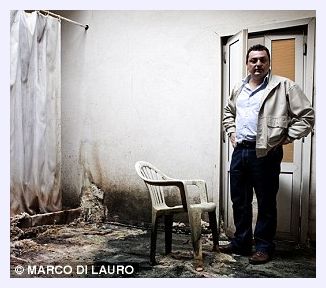
'Right now we may well be in another period of uplift,' he says. 'If it occurs as before, we might expect another 60 years' worth of unrest, and possible earthquakes and eruptions, with two or three more episodes and uplift to occur in the next ten years. We have to presume we have a few more decades of unrest, and if this is going to be the case, then we have to get more data about the volcano now.'
Kilburn and the other scientists' work may well be crucial if the people of Naples - and the rest of Europe - are to avoid another Pompeii scenario. Yet despite the urgency, the mayor of Naples has just dramatically halted the project. Drilling was to begin this month on the site of the old Bagnoli steel mill, on the eastern part of the caldera, but was stopped following the very public objections of a sole local scientist, who has warned that the drilling itself could actually trigger an explosion that could destroy the city.
The people of Naples seem to be damned if they do and damned if they don't, but is it really possible that one simple drill hole could cause an eruption that could end life as we know it in Europe?
Pisciarelli, near Pozzuoli - the centre of the caldera
Renato Somma, of the National Institute of Geophysics and Volcanology in Naples, pushes the Fiat through the gears as we wind our way through the grounds of a hotel and health club built on the side of the Solfatara crater. Once fashionable, the hotel was used by U.S. Naval officers until a rise in the ground of 6ft led to an earthquake that damaged the base, and saw the U.S. Navy relocate 20 miles away from Naples.
The road runs out, and Somma stops the car beside an abandoned earthquake-damaged building. To our right the hill continues upwards. To our left is a five-a-side football pitch and the valley below. The only curious thing is the colossal plume of steam energetically billowing upwards from behind the pitch. We walk alongside the ground and duck under a loose section of wire fence, watching the steam as it swirls in the wind.
Suddenly the Tarmac ends and yellow and white volcanic stone cracks underfoot like stale bread. A few steps further and we hit a wall of sulphur, which rolls over us in invisible waves, collecting in our throats and turning our stomachs.
Where once there was green hillside there's now an atrophic scar of sponge-like volcanic rock. At the lowest point of the scar gurgles an inhospitable pool of boiling muddy water, where bubbles of gas rise to the surface and pop like blisters. Somewhere below, magma and water are meeting and making CO2, which filters through the sponge and prevents any kind of plant or animal life from living here.
I tell Somma I'm disappointed there's no lava: you see a volcano, you want lava - it's like a Martini without the olive. He laughs.
'This is even more dangerous than the lava flow,' he says. 'Below here we have a risk of hydromagmatic eruption - when the magma and water meet you have a more explosive pressure than with magma alone.'
Theoretically, if Campi Flegrei explodes, much of the vibrant metropolis of Naples could look like this one day. Somma points out that the site is well monitored, the data fed back to the institute's control centre in Naples. Infrared cameras surround the larger Solfatara crater behind us, while gauges measure the levels of CO2. If these shoot up, and the seismic monitors are detecting earthquake swarms, it's probably time to start thinking about putting the kids in the car.
'OK,' says Somma, 'you've seen this; now you'll see what the locals call the monster. You have to see the monster before you go to the control room!'
We trek back to the earthquake-damaged building beside the car. It turns out to be an abandoned indoor swimming pool. Somma is excited: 'Since the earthquake the monster has grown inside the house!'
He's right. There is a monster. It's as if hell has crept up through the foundations, pushing aside heavy stone floor tiles, bleeding through holes in the walls. Urchins of luminous green sulphur, muted moss-coloured sponges and blooms of red, green and cobalt blue are digesting the building. The sulphurous steam pouring from the hot rock below has deposited a mineral coral and left the air inside dead and sauna-like. Sparrows, which came in here to roost, lie dead on the ground from CO2 poisoning.
Control room, National Institute of Geophysics and Volcanology, Naples
Giuseppe De Natale, the softly spoken volcanologist leading the drilling project, walks along the bank of 60 LCD screens and explains that each one displays a feed from sensors around Campi Flegrei and beyond.
Tidal gauges measure the true level of the seabed in the Golfo di Pozzuoli; seismographs measure the heartbeats of the volcanoes, picking up any quakes. The line on one of the monitors trembles up and down; these are relatively shallow quakes. If a serious seismic event were to occur, it would be De Natale's job to crunch the data and advise the Italian Ministry of the Interior on whether to evacuate the city.
Should the people here be worried?
'There is always a possibility of further eruptions in our lifetime,' says De Natale.
'The problem is that Neapolitan people are conscious of Vesuvius, but few of those who live in this area know about the caldera, or that all of this land is volcanic. Vesuvius is small compared to the caldera, and in my opinion the caldera presents a greater risk. Vesuvius is surrounded by a lot of people, but has nowhere near the population density of Naples.'
De Natale's plan is to drill to a depth of two-and-a-half miles using a team from the International Continental Scientific Drilling Programme (ICDP) and their InnovaRig, a state-of-the-art semi-automatic modular rig that can switch drill heads mid-flow to read temperatures and take core samples and gas readings, before switching back to a plain old rotary drill head to continue the job of boring down through rock. Drilling no deeper than two-and-a-half miles will put the drill head around two miles above the magma reservoir.
This far down, the rock is no longer heated by water (which doesn't exist as a liquid at this depth), but solely by the magma. Measuring the rock's residual temperature will therefore give the scientists a better idea of the depth and size of the vast magma reservoir below.
De Natale explains that there are four major benefits to drilling, all of which will help the people of Naples avoid a similar fate to that of the unfortunate people of Pompeii.
First, it will greatly improve scientists' knowledge of what has happened here in the past, and of the eruptive history of the caldera. Second, they hope it will help them to solve the riddle of what has caused the doming and uplift around Pozzuoli - is it pressure from magma and water, or is it expanding rock?
Third, by drilling down they will be able to measure the temperature of this expanding rock and place sensors to obtain a three-dimensional view of the Earth's crust.
Finally, it will enable them to remove samples of the rock for testing at a state-of-the-art UK facility. If the doming begins again in earnest they will need to know more about the properties of this rock and how it might behave under different kinds of stress: cracking or subsidence can lead to eruptions.
Soil and rock samples will be flown to University College London, where Chris Kilburn will go to work providing data for new computer models that will recreate the conditions in which the caldera was formed, and should help to predict eruptions.
'Calderas have the potential for large-volume eruptions, so it's convenient that we understand the relationship between the caldera, the magma and the crust in between,' he says.
'Campi Flegrei is also flat. And most of the eruptions occur somewhere within a four-mile area. You don't know if it's going to be the left side, the right side, the north or the south.
'Short-term precursors, like swarms of seismicity or deformations in the crust, may only happen a few days before the eruption, and even then we can't tell whereabouts the eruption is going to occur. This is why dealing with a caldera is one level of complication greater than dealing with a volcano, where the cone is above ground, simply because we have much less of an idea where the magma is likely to come out.'
The only thing standing between the 25-strong team of scientists from the ICDP and the pilot hole they need to drill are the complaints of a solitary scientist, geochemist Benedetto De Vivo. Though his arguments aren't well supported by the wider scientific community, De Vivo maintains that even a 1,700ft-deep pilot hole could wipe out Naples, and his fears of catastrophe have been widely publicised in the Italian press. Fearing a public backlash, the mayor of Naples has delayed the start of drilling on the site in Bagnoli pending further technical reports.
I ask De Vivo if he really thinks the drilling would cause an eruption. 'The drilling could cause an explosion - not an eruption - caused by the supercritical fluids, and could trigger small-magnitude earthquakes. This has already happened in other similar projects in other parts of the world.'
'Drilling triggered an eruption of a mud volcano, Lusi, in Indonesia,' says Dr Dougal Jerram of Durham University. 'It was very similar to what happened in the Gulf of Mexico - over-pressurised material was drilled through, which caused an eruption of that material at the surface. It was hot mud and water, which is a different kind of thing. The difference is that if you drill into molten rock, it doesn't necessarily come to the surface.
'If you look at Eyjafjallajökull in Iceland, they have GPS instruments recording all around the volcano. Prior to the eruption those instruments moved specifically to suggest swelling in the shallow parts of the crust - which was this magma getting close to the surface, building up - and it erupted some time later. Obviously in examples like Campi Flegrei, prior to an eruption of a moderate size, you would see signals on the ground to indicate a kind of swelling.
'In the recent past Campi Flegrei has had periods of subsidence and bulging - would you go and drill very close to it or drill into it? Probably not. But if the system is very stable, like at the Solfatara, it's quite clear that it's actively de-gassing. You've got fumaroles at the surface and you have pressure being released. If you release the pressure in a carbonated drinks bottle, when you shake it up and try and get it to explode again, it doesn't do so quite as violently.'
Uli Harms, head of scientific drilling at the ICDP in Potsdam, helped design the state-of-the-art drill that would be used for the second stage of drilling in Bagnoli. Harms once drilled into an unexpected pocket of magma during a project in Iceland in 2009. Far from creating a new volcano, the magma simply came into contact with the drill mud and turned into glass. He says that magma will no more run up a drill hole than water will run up a straw when you place it in a glass of water.
'The hole has a tiny diameter, and is pressurised with a kind of mud that lubricates the drill head. It is not an open hole, nor can it be widened to make a volcanic conduit or something like that.
'But people have to be clear that the risk in Naples is not the drilling; the real risks are the two volcanoes themselves, Vesuvius and the caldera. They really do pose much more danger.'
De Natale is adamant that now we have the technology to help us understand volcano activity, we should use it: the drilling should go ahead.
'I live in Naples myself,' he says, 'and like most people here could not imagine having to abandon this land. But we have to be aware of the danger lurking beneath our feet.'
The people of Pompeii never had that luxury.
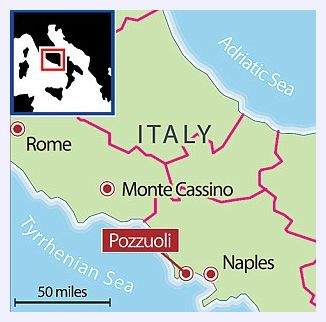
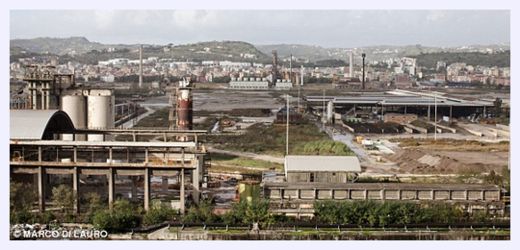
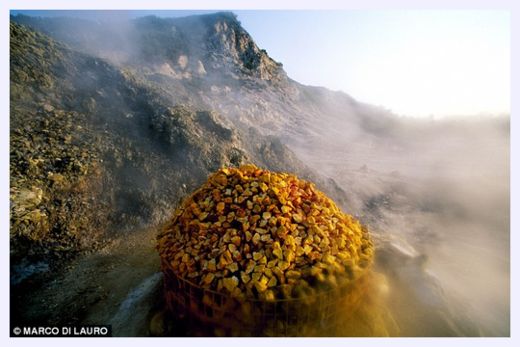
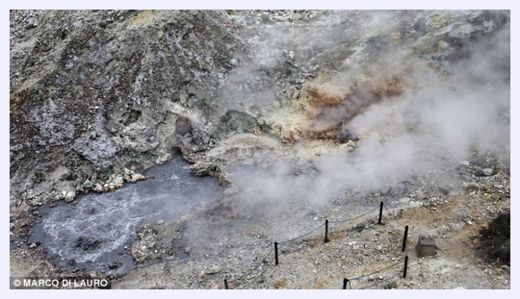
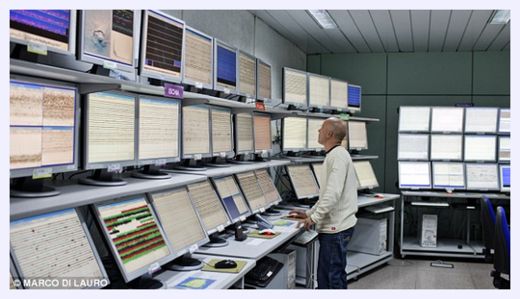
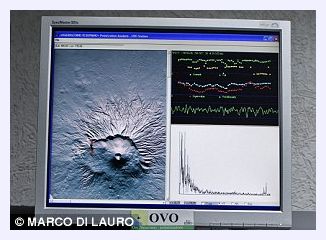
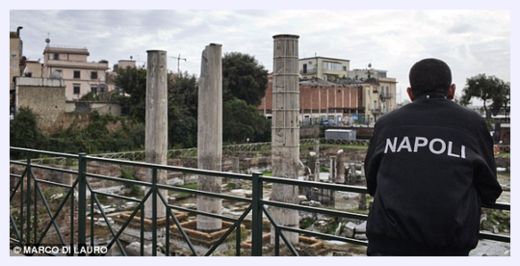

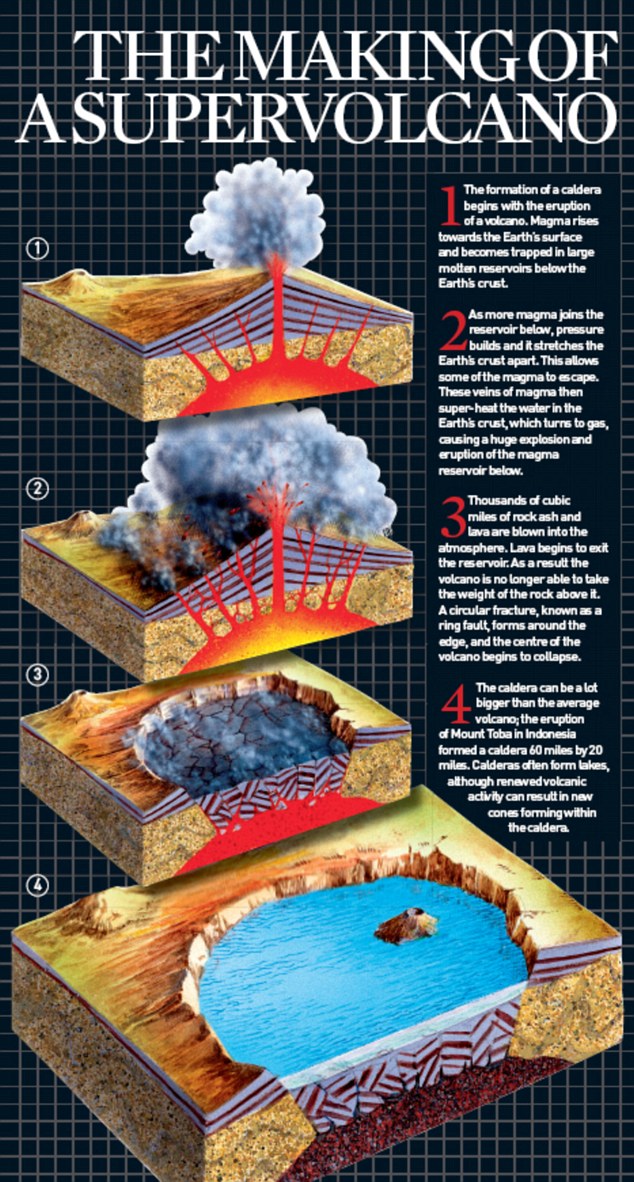



Reader Comments
to our Newsletter